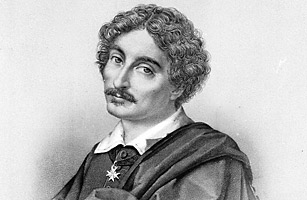
The early Baroque painter Michelangelo Merisi da Caravaggio, remembered better as simply Caravaggio, dazzled Italian audiences at the turn of the 16th century with what was then deemed a revolutionary style. His works, commissioned by ecclesiastical authorities and wealthy private patrons alike, were something of a departure from earlier Renaissance painting, depicting religious subjects often in an intensely natural and human light. For many in Rome, Milan and Naples, Caravaggio was the toast of the town, but others — especially conservative clergy — bristled at the supposed vulgarity and impiety of much of his oeuvre. This wariness wasn't helped by Caravaggio's personal behavior: the itinerant artist was a notorious brawler and carouser, and found himself hounded by enemies across the Italian peninsula. He spent many years on the run after allegedly committing murder in Rome — a charge some say was harsh, but which led to the Pope placing a death warrant on his head — and died still in desperate hope of a papal pardon.